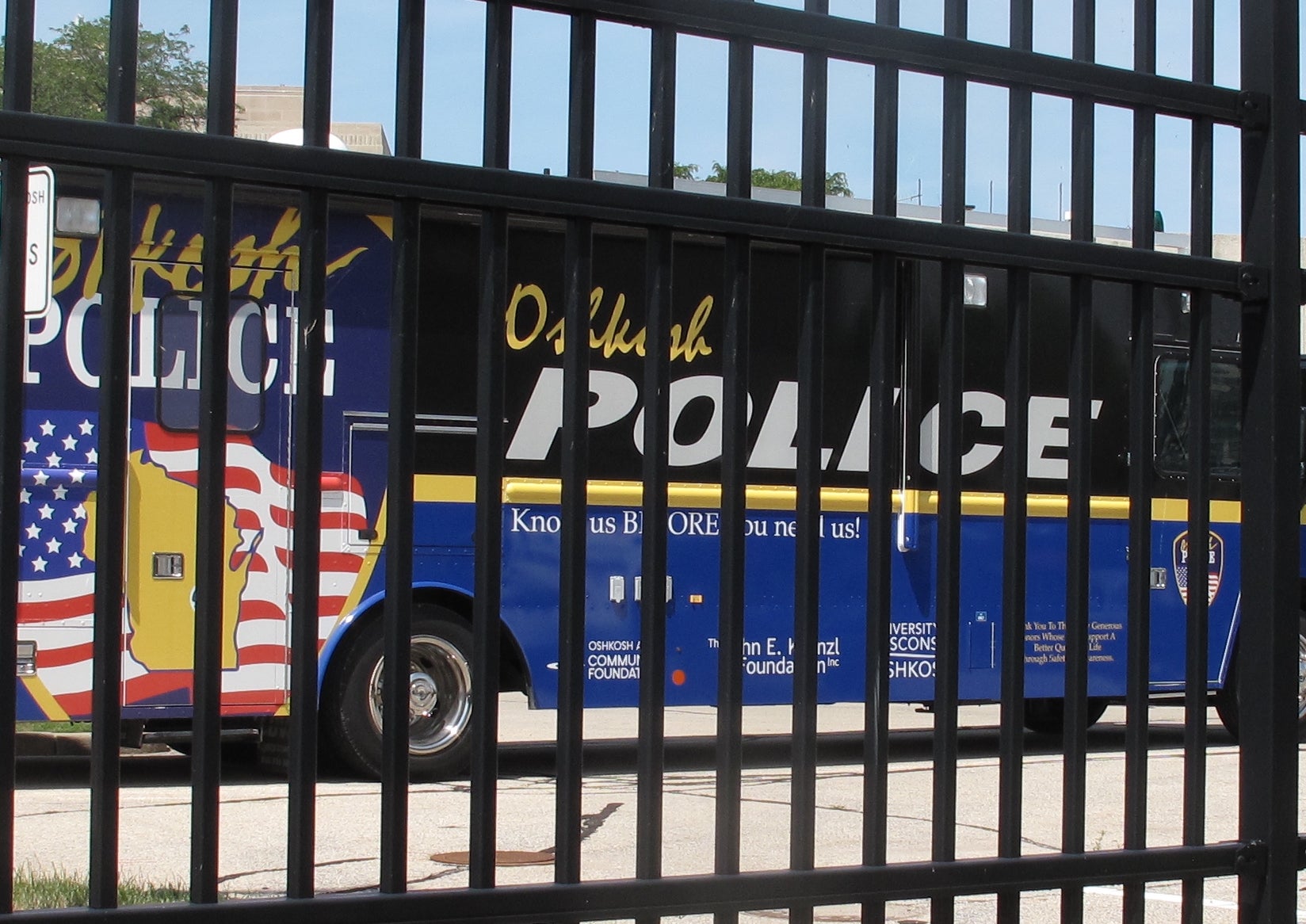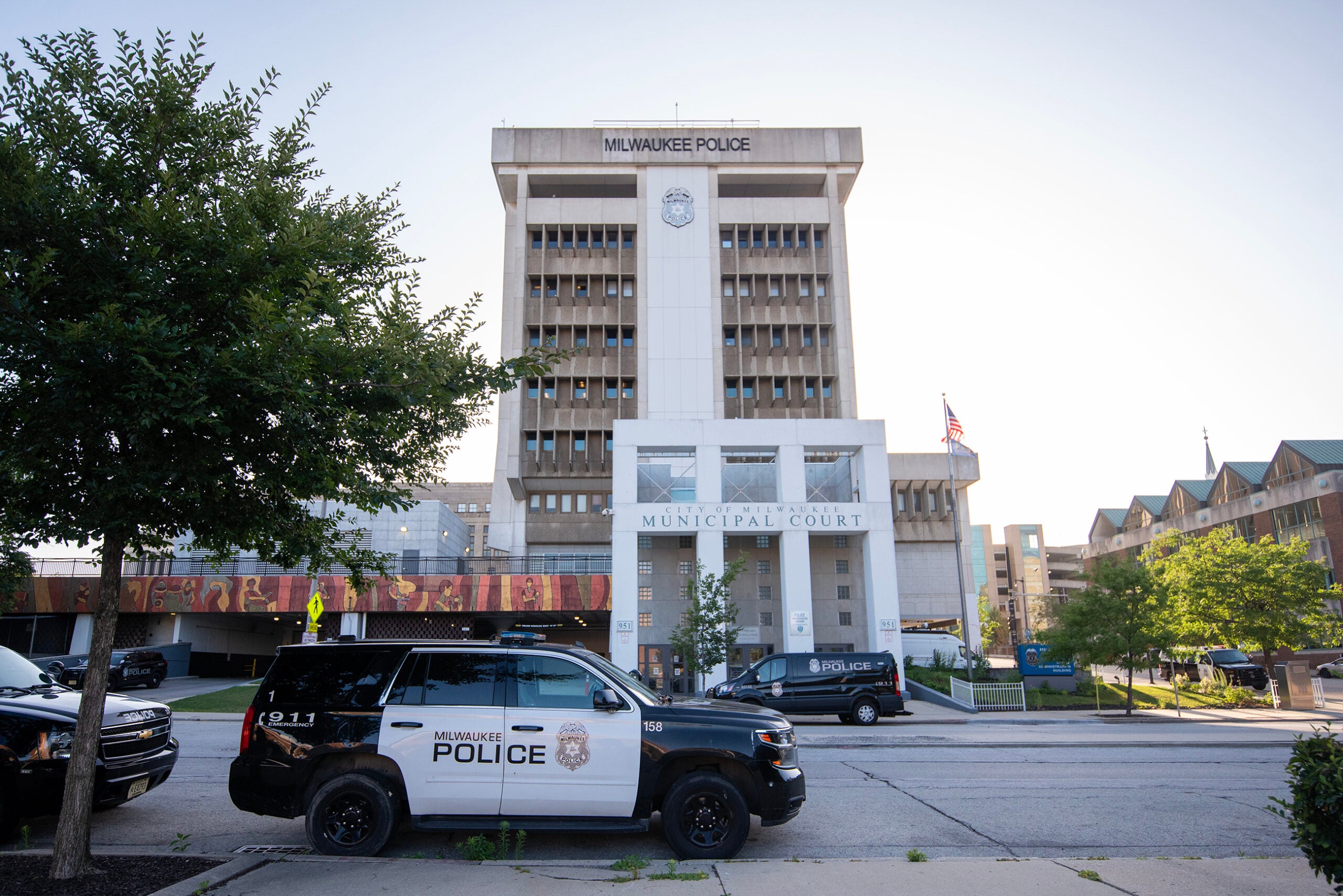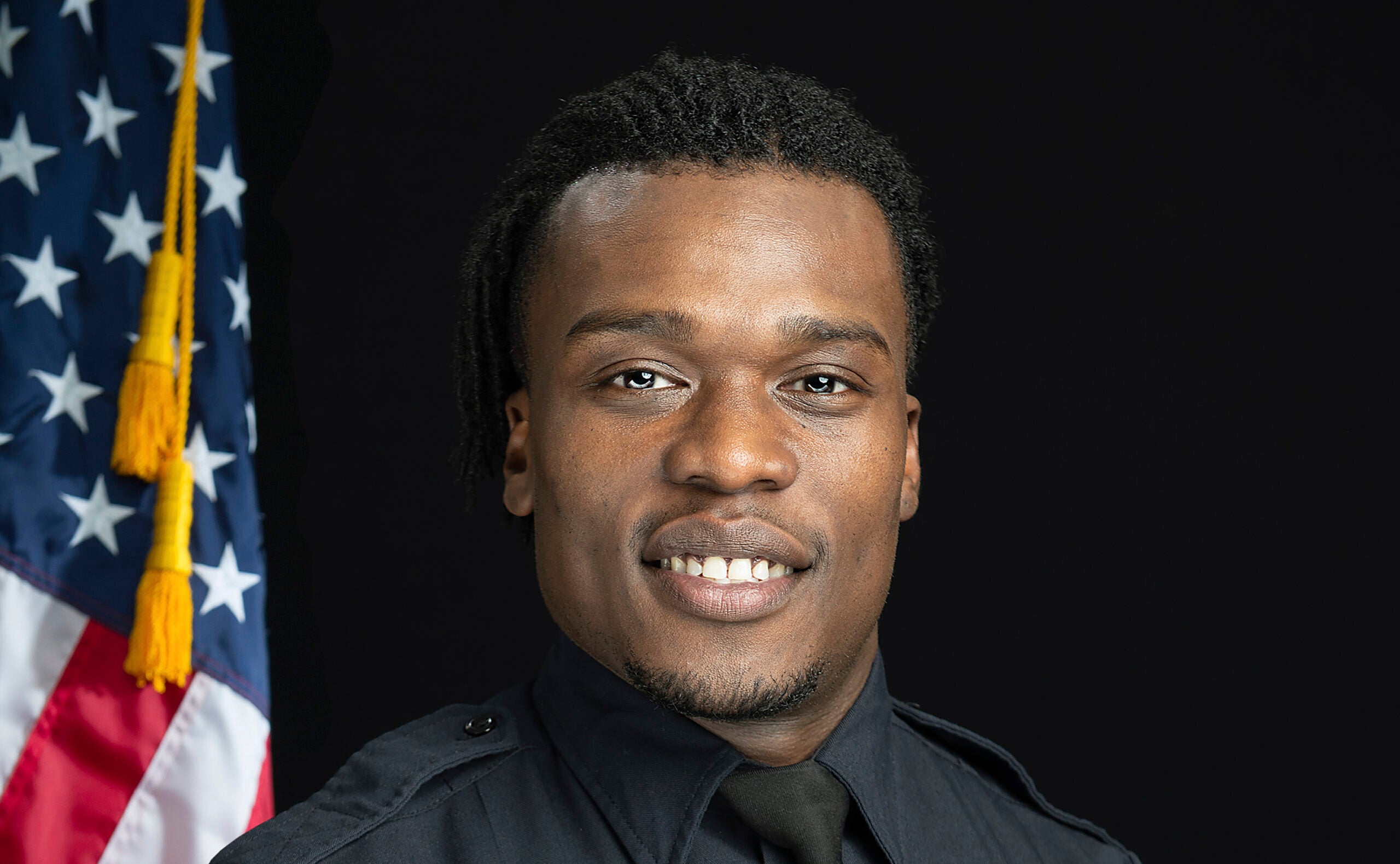An Oshkosh police officer shot and wounded a suicidal 34-year-old man two blocks from the man’s house this summer after authorities say he pointed a hunting rifle at them.
Benson Thao’s identity was splashed in news stories across the region in the weeks after the June 29 shooting, in which the Winnebago County district attorney announced the police officer was legally justified in firing his service rifle.
Yet the identity of the officer and some of the others involved in the incident remain withheld from the public — even in court documents.
News with a little more humanity
WPR’s “Wisconsin Today” newsletter keeps you connected to the state you love without feeling overwhelmed. No paywall. No agenda. No corporate filter.

The reason for breaking a longstanding norm in Wisconsin law enforcement transparency?
Police and prosecutors say the officers were victims for having a gun pointed at them and Marsy’s Law, a constitutional amendment passed by voters in 2020 to protect victims’ privacy rights, includes law enforcement.
It’s the latest example of a national trend in which more than a dozen states have passed nearly identical amendments leading some law enforcement agencies to withhold identities of witnesses and officers in police shootings, a practice civil liberties advocates say erodes police accountability.
In Columbus, Ohio, police officers involved in fatal shootings have had their identities withheld and even their faces obscured in edited body camera footage released after city attorneys cited privacy for police officers under Marsy’s Law.
In Florida, the state’s highest court is weighing a legal challenge brought by the police union to prevent the city from releasing the names of officers who shot and killed suspects, arguing the officers are victims and should be afforded privacy.
Civil libertarians point to similar episodes in South Dakota and North Dakota that were reported before Wisconsin voters approved Marsy’s Law at the urging of a lobbying effort funded almost entirely by a tech billionaire.
DAs diverge on release of key information

A similar nonfatal shooting by Stevens Point police in April played out quite differently than the Oshkosh incident. Police shot and wounded an armed man after he allegedly opened fire on officers who had surrounded him in his home’s detached garage.
Initially, the names of the police officers were withheld in charging documents against Nicholas E. Meyer, the wounded 41-year-old who faces attempted murder charges.
But Portage County District Attorney Cass Cousins released the names of the two officers — Alexander Beach and Zachary Gartmann — in a press release announcing that he had cleared their use of deadly force.
“There is nothing specifically in the statute that says these names must be kept confidential,” Cousins told Wisconsin Watch. “I think there’s always gonna be a tension between transparency and victim rights.“
Sometimes the names of police officers are released while the investigation is underway.
In Grand Chute, town police Lt. Russ Blahnik was named less than 24 hours after he shot a 34-year-old fugitive twice in the leg on Aug. 1. The Outagamie Sheriff’s Office said Pierce Don Lee Folkerts ignored commands to drop what later proved to be a replica pistol after leading police on a foot chase through an apartment complex. He’s expected to survive.
Uncertainty in applying Marsy’s Law
The difference in disclosure standards can be traced to uncertainty among police and prosecutors on how to fairly apply Marsy’s Law — a constitutional amendment approved by nearly 75 percent of Wisconsin voters that broadens the definition of a crime victim and strengthens privacy protections that critics say comes at the expense of the rights of criminal defendants.
Oshkosh Police Chief Dean Smith said law enforcement officials are keeping with a national trend to afford more privacy to victims — including their own police officers acting in the line of duty.

“The voters have said this is what they want,” Smith told Wisconsin Watch. “And this is a piece of that.”
But civil rights groups argue the constitutional amendment question on the ballot was simplistic and didn’t fully explain the implications of the law.
“Who in their right mind would be opposed to expanding victims rights?” said Margo Kirchner, executive director of the Wisconsin Justice Initiative, a public interest lawyer group that unsuccessfully challenged the constitutional amendment in court. “And that one question just leaves out so much information on what it does to defendants’ rights, what it does to the rights of the public to know about police shootings.”
Wisconsin’s constitutional amendment made it through the Republican-controlled Legislature with bipartisan support including an endorsement from Democratic Attorney General Josh Kaul. The 64-word question went to voters with no mention of changing standards for transparency in police shootings.
A foreseeable problem
Critics in the legal community say the complications created by Marsy’s Law were clear but crime victims’ rights are an untouchable third rail in politics.
“A lot of people knew that this was a problem coming,” said Ed Fallone, an associate law professor at Marquette University Law School who ran unsuccessfully for Wisconsin Supreme Court in 2013 and 2020. “And unfortunately, if you were an elected official or candidate for office, like myself, the smart thing to do from a vote-getting standpoint was to just keep your mouth shut.”
Oshkosh’s police chief pointed to the Winnebago County district attorney’s decision to withhold the names of the officers in deference to privacy concerns under Marsy’s Law. Still, he admitted it can cause frustration among some members of the public.
“This is a difficult thing,” Smith said. “I don’t know if when Marsy’s Law was enshrined within our Constitution, if there was a consideration of all the areas that this could touch.“
Winnebago County District Attorney Eric Sparr — a longtime prosecutor who began his career in the office in 2005 — said other than juveniles or victims of certain sensitive offenses like rape or domestic violence, it has long been standard for prosecutors to identify police, suspects and even witnesses in court filings.
“Once Marsy’s Law hit, we shifted right away and pulled all victim names from public documents,” Sparr told Wisconsin Watch.
That can include police officers that deploy lethal force. Sparr said he understands public concerns about loss of transparency, but it’s a tough call and local prosecutors are left trying to interpret victims’ privacy rights, which he says are “annoyingly poorly defined” and left up to interpretation.
“There’s not a lot of guidance as far as implementation,” Sparr said. “Department of Justice has made some efforts to interpret and share their interpretations so there can be as much uniformity as possible around the state, but it’s just inherently difficult when the language and the amendment was really very general.”
The state Department of Justice referred Wisconsin Watch to a 2021 advisory from its Office of Open Government that discusses balancing victims’ privacy requirements with disclosure responsibility under the public records laws.
“Authorities cannot create a bright-line rule or policy to withhold all victim records and information,” it said. “Authorities must still apply the public records law balancing test to each and every record, on a case-by-case basis, to determine whether to release the records or information.”
Kaul declined to comment. But he did release a statement this spring on the third anniversary of the constitutional amendment.
“Ensuring that the rights of crime victims are respected both makes Wisconsin safer and is an important part of achieving justice,” Kaul wrote in a statement posted on the Marsy’s Law for All foundation’s website. “I’m proud of the excellent work the Wisconsin Department of Justice does to stand up for victims in Wisconsin.”
The department’s Division of Criminal Investigation, or DCI, investigates many police shootings in response to a 2014 law requiring outside agencies to assist such investigations. It continues to release the names of police officers in case files posted on its website.
But it has allowed local authorities to interpret the complex and competing responsibilities. In the case of the Oshkosh police shooting, it deferred to that city’s police department’s interpretation of officer privacy in a press release.
Fallone, who chaired the Milwaukee Fire and Police Commission for two years until stepping down in July, said Marsy’s Law allows some police departments to backslide on transparency.
“It’s in the eye of the beholder,””Fallone said. “And I’m not surprised that some police departments and prosecutors define the victimhood of police broadly and other departments define it narrowly.”
Marsy’s Law doesn’t shield disclosure in Milwaukee
In Milwaukee, only one of the officers in a pair of police shootings on Cinco de Mayo that wounded two people has been identified in public documents. Milwaukee Police Officer Andrew L. Langer’s last name was included in charging documents against a teenager who allegedly fired an illegally modified pistol that fired rapidly like a machine gun.
Milwaukee police officials confirmed there is only one Langer on the force. He was also one of at least nine officers named in a lawsuit brought by a man who was clubbed, pepper sprayed and tased by several Milwaukee officers in a violent 2018 confrontation in which he fought off several officers. The incident attracted significant publicity and public scrutiny after being captured by bystanders and recorded on police body cameras.
The Milwaukee Common Council recently paid a $175,000 settlement after the civilian sued alleging excessive police force.
A Milwaukee Police Department spokesperson said it doesn’t publicly release the names of officers involved in shootings. But Fallone credits its police chief for not interpreting Marsy’s Law as a barrier against disclosure of officers in court records, public records requests or by members of the police commission.
He said it’s important that the identities of officers involved in use of force be known so they can later be held accountable — which doesn’t always happen.
“Residents are still upset about officers who have kind of moved around and never really faced any consequences for their actions,” he said.
No charges were filed in an unrelated Cinco de Mayo shooting after the Milwaukee County District Attorney’s investigation found a 22-year-old Greenfield resident — whose name was not released — had been defending himself in a chaotic scene in which he exchanged gunfire with subjects in a car and legally owned the weapon.
The district attorney said MPD’s use of force remains under investigation in both May 5 nonfatal shootings. But in cases that aren’t prosecuted, it remains unclear whether an officer’s name would be released.

Winnebago DA: Police aren’t automatically victims
In Shawano County in 2022, a police officer shot and killed 46-year-old Lucas Christenson in his home after he threatened his wife and her son with a shotgun. Shawano Police Officer Jeff Buettner fired 11 times — striking Christenson twice — as the man trained the gun on his wife and then aimed it at the officer.
Sparr conducted the legal review of the death of Christenson — who had mounted an independent challenge for county sheriff in 2014 — in response to a request by the Shawano County district attorney.
The sheriff’s office — which investigated the shooting in conjunction with state investigators — didn’t directly release the name of the police officer but did release Sparr’s full report, which identified everyone in the Nov. 19, 2022, incident aside from the dead man’s wife.
“We do a memo to law enforcement that does have those names,” Sparr said. “What they choose to do with that, ultimately, is up to them.”
The decision to publicly name the officer who fired the deadly shots in that report contrasts with the recent withholding of key officer names involved in nonfatal police shootings in Oshkosh.
Sparr said it’s a judgment call he has to make on a case-by-case basis.
“I don’t know if we were ever truly faced with the question explicitly of whether that officer or those officers were victims,” Sparr said.
He said the person whose life was most threatened in that incident was the man’s estranged wife — whose name was withheld — not responding officers.
“The main person at least who was endangered in that one was someone else, not law enforcement,” Sparr added. “And so I guess I wasn’t, in that case, really thinking of them as victims.”
In another incident from this year, an Oshkosh police officer fired on a wanted suspect as he allegedly drove a car toward the officer. In that case the officer’s name remains blacked out in a legal memo and withheld in charging documents obtained by Wisconsin Watch.
Montrael Clark, the 44-year-old suspect who survived a gunshot to the forehead is identified in charging documents and faces felony charges of reckless endangerment.

If the case goes to trial, the facts of the case will be presented to a jury.
“And then clearly, names are coming out, people have to testify,” Sparr said. “There’s no way around it at that point.”
Fallone said taking police officers’ claim of victim privacy to the extreme, means normal scrutiny is made difficult.
“The day-to-day work of being a police officer could pretty much be construed by some in their own opinion as falling under Marsy’s Law,” Fallone said, “which makes any sort of public oversight and transparency and even some cases of discipline, quite difficult.”
In Dane County, the district attorney’s office hasn’t named officers in two recent press releases announcing it had ruled their use of force justified. But their names were released by the state DCI whose agents investigated the shootings.
The last time District Attorney Ismael Ozanne named officers who used force was in a March 2022 press release clearing Madison police officers who had tased a suicidal man in November 2021 after he shot himself with his own gun.
Ozanne did not respond to requests for comment about his office’s policy.
Background to constitutional amendment
Marsy’s Law has been approved by voters in ballot measures in at least 14 states, though it has been overturned in Montana and Pennsylvania over questions of its conflict with the U.S. Constitution.
The movement to adopt the constitutional amendment was self-funded by tech billionaire Henry Nicholas III. The law is named after his sister who was killed by an ex-boyfriend in the early 1980s.
In 2020, Wisconsin became the latest state to enshrine the law in its constitution after a $1.5 million legislative lobbying effort that at one point employed five registered lobbyists.
Marsy’s Law for Wisconsin — which was funded entirely by Nicholas’ national organization — spent nearly $4.5 million to sway voters to support the constitutional amendment.
Wisconsin Justice Initiative tried to organize opposition but was outspent by a ballot measure that enjoyed support from both major parties.
“They had this single issue and a lot of money,” Kirchner recalled from the 2020 campaign. “They had ads on the air telling people to vote yes, there was nobody in response who could afford television ads.”
A legal challenge claimed that the ballot question was too simplistic. When the group won in Dane County Circuit Court, Wisconsin Justice Initiative publicly urged Kaul not to defend the amendment considering the well-publicized challenges in implementing it in other states.
“They could have decided to not appeal and just let Marsy’s Law fall — and they chose not to,” she said. “So Josh Kaul’s office chose to fight for the validity of the amendment.”
The Wisconsin Supreme Court ultimately decided to uphold Marsy’s Law. But the 6-1 decision was fractured with five separate decisions applying different legal reasoning. For now it’s the law of the land with the criminal justice system left to sort it out.

Legal challenges to Marsy’s Law continue
There is another challenge pending in the Court of Appeals, including a contempt order against a prosecutor who allowed both victims to hear each other’s testimony in a battery case. Courts routinely sequester witnesses so their testimony can’t be influenced by others, but Marsy’s Law guarantees victims the right to attend every hearing and stage of a trial.
Marsy’s Law for Wisconsin’s state director Nela Kalpic said since 2020, there have been multiple incidents where law enforcement fired shots and the names of those officers have been released. She said she was not familiar with the Winnebago County examples, but acknowledged a potential need to clarify how the law should be fairly applied.
“It is appropriate going forward that state and local policymakers and courts work out the application of the law over time,” she said.
For critics like Fallone, the two-time Supreme Court candidate, the constitutional amendment that “sailed through with minimal scrutiny” has left just these sorts of complexities for the criminal justice system to untangle. It won’t be easy.
“Once you amend the Constitution to put something in there,” he said, “you kind of have to live with it.”
The nonprofit Wisconsin Watch (www.WisconsinWatch.org) collaborates with WPR, PBS Wisconsin, other news media and the University of Wisconsin-Madison School of Journalism and Mass Communication. All works created, published, posted or disseminated by Wisconsin Watch do not necessarily reflect the views or opinions of UW-Madison or any of its affiliates.





